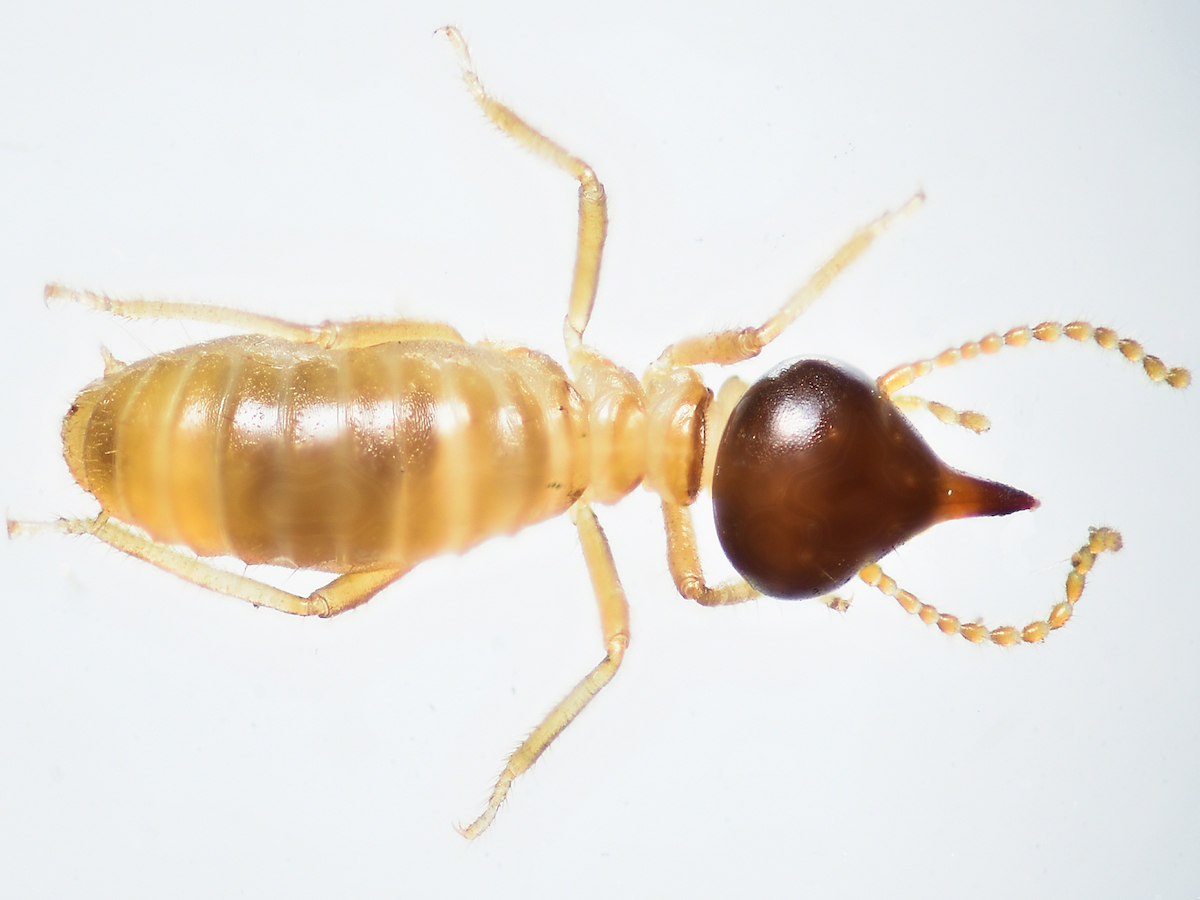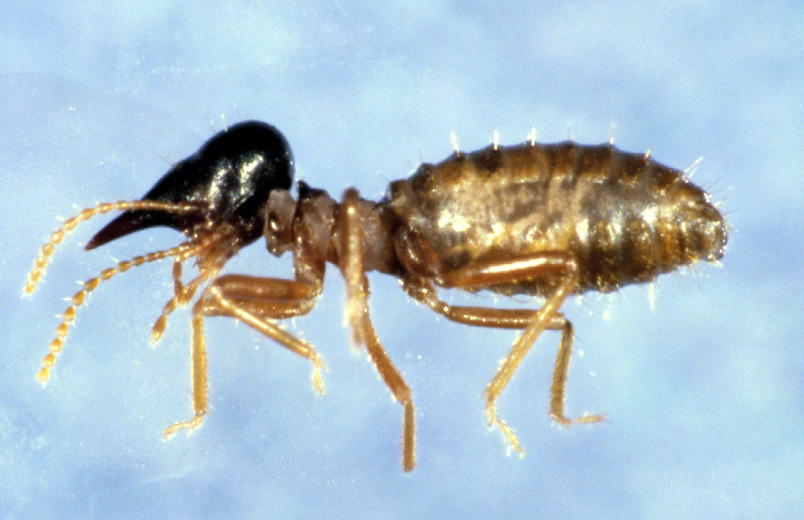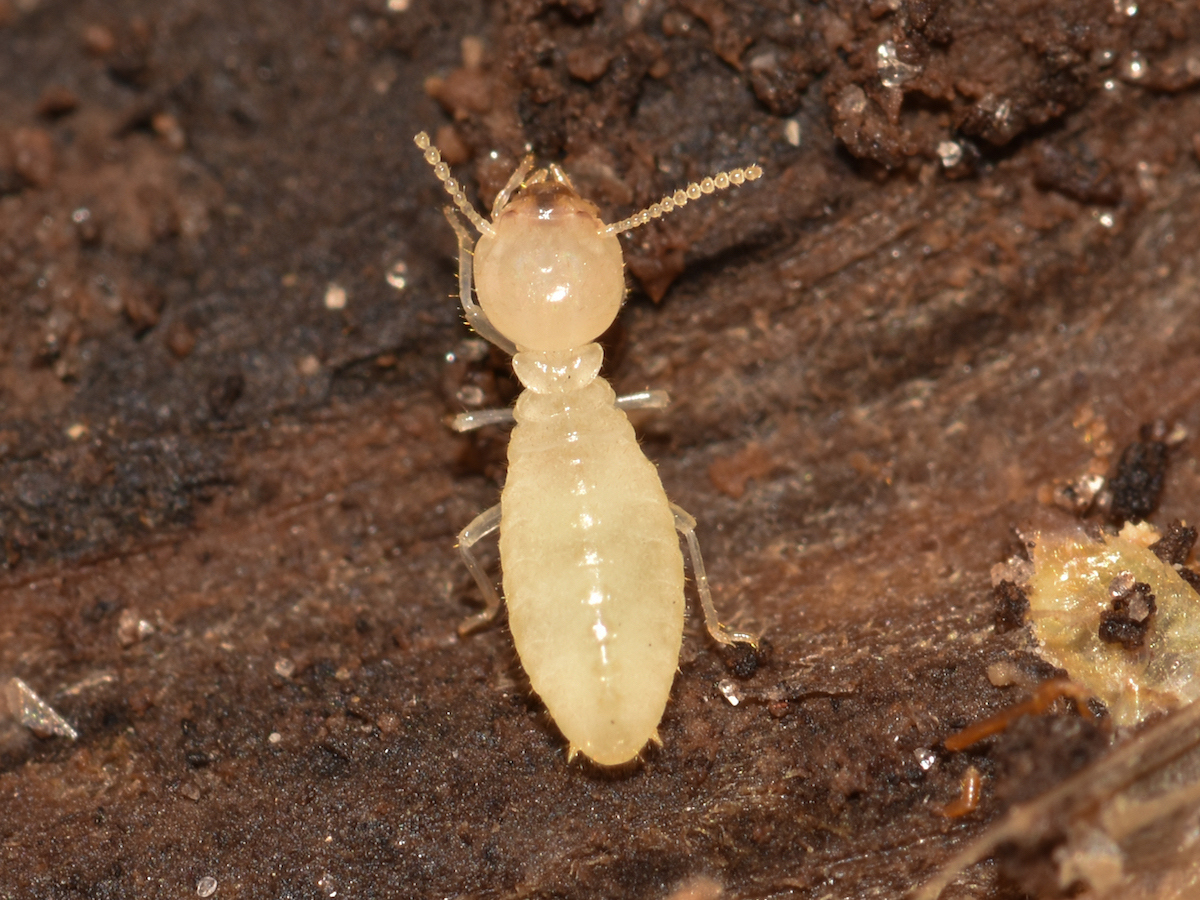Conehead Termites Nasutitermes corniger

Conehead Termite Identification
Color: Cream bodies; dark brown heads
Size: 3 - 4 mm
Legs: 6
Antennae: Yes
Shape: Long; narrow; Soldiers have a pear shaped head
Region: Broward County, Fla.
What is a conehead termite?
Originally known as the “tree termite,” the conehead termite thrives by feasting on wood. They were renamed as “Conehead Termites” to alleviate the misconception that this pest is only found in trees, and also for the cone-like shape of the heads of their soldiers. This invasive species is native to the Caribbean and was only first introduced to the United States in 2001.
These termites typically spend their time within their colonies but will also leave to create satellite nests in trees, shrubs, or even open ground. They will also infest fences, paper products and any other cellulose sources they can gain access too. This termite species is highly aggressive and can cause detrimental damage in a short amount of time if left undetected.

What do conehead termites look like?
Taking after their name, soldier conehead termites have a dark brown cone shaped head attached to their cream-colored bodies. They are long and narrow, growing to about 3-4mm in length with six legs and two long antennae. While soldiers only make up about 1-2% of subterranean and drywood termite colonies, 20-30% of a typical conehead colony is made up of soldiers. The rest of the colony has a more normal appearance, with cream-colored bodies and less distinctive heads.
Conehead termites are also easily identifiable by their nests and tunnels which appear above ground in the grass, as well as in trees and bushes. Most other termite species keep their nests and tunnels hidden beneath the ground. The conehead termites’ nests resemble a ball of chewed wood and their tunnels are made of mud.
Unlike most termites, the conehead termite does not rely on underground tunneling to travel. Instead, they forage on the ground like ants, allowing them to spread quickly. Furthermore, these termites can survive in most environments, which allows them to travel far distances.
Conehead termites build dark brown "mud" tubes that are used to travel from their nests to feeding locations. These above ground tunnels are usually only about ½ an inch wide and can be found along the sides of buildings, the mortar joints of brick, and on about any surface. These tubes are used by the termites 24/7 as they travel to and from food and water sources.
Conehead termites also create freestanding nests on the ground, in trees or in wooden structures. The nests can be up to 3 feet in diameter, resembling a large ball of paper and mud carton. Additionally, these nests have a hard, bumpy surface of chewed wood and are often several hundred feet from the colony. This is a distinguishing characteristic of the conehead termite, as many other species of termites tend to keep their nests hidden.
The conehead termite can remain undetected for years, as they refrain from building nests until their colony is strong and healthy. However, it is possible to find their tunnels without a nest.
Conehead termites primarily cause structural damage, which can devastate a property if left unnoticed for too long. These pests will eat any wood they find, destroying structural lumbar, furniture, fence posts and more. Aside from household destruction, these termites can overwhelm trees and bushes, potentially killing them. If a conehead termite infestation is found, it is imperative to begin the removal process immediately due to the short amount of time it takes for these termites to destroy the structural support of homes or buildings, as well as their ability to quickly travel and spread above ground.
Conehead termites are an extremely aggressive species known for causing widespread property damage in a short period of time. They feast on anything containing cellulose, meaning trees, shrubs, wooden furniture, and structural lumbar. If left unchecked, these destructive pests can spread and cause millions of dollars in damage.
These termites do not pose a threat to human health. Conehead termites do not bite or sting and are not known to carry any diseases. However, they are not easy to contain as a colony can simply move or relocate if not handled properly, potentially causing new damage elsewhere.
These pests have a high reproductive rate, allowing their colonies to grow at a quick pace and create more damage. There can be up to hundreds of thousands of termites in one colony. This is why it is vital to begin the removal process as soon as they are identified, as well as schedule regular household inspections.
Seeing a nest or the termites themselves are the primary indications of an infestation. Conehead termites are easily identifiable due to their distinctively shaped heads and can often be found in groups inside their nests. They are small, but not too small to be seen by the human eye. Furthermore, their nests are built in visible spaces above ground, allowing them to be detected. Tunnels may be harder to spot but also signal an infestation. These mud tubes can be found running along the ground or up onto walls and trees.
Due to their unique habits, conehead termite removal is not a do-it-yourself job. If you suspect an infestation, contact a licensed pest control professional to conduct an inspection and develop an effective action plan. You can find one with the helpful zip code search below.



